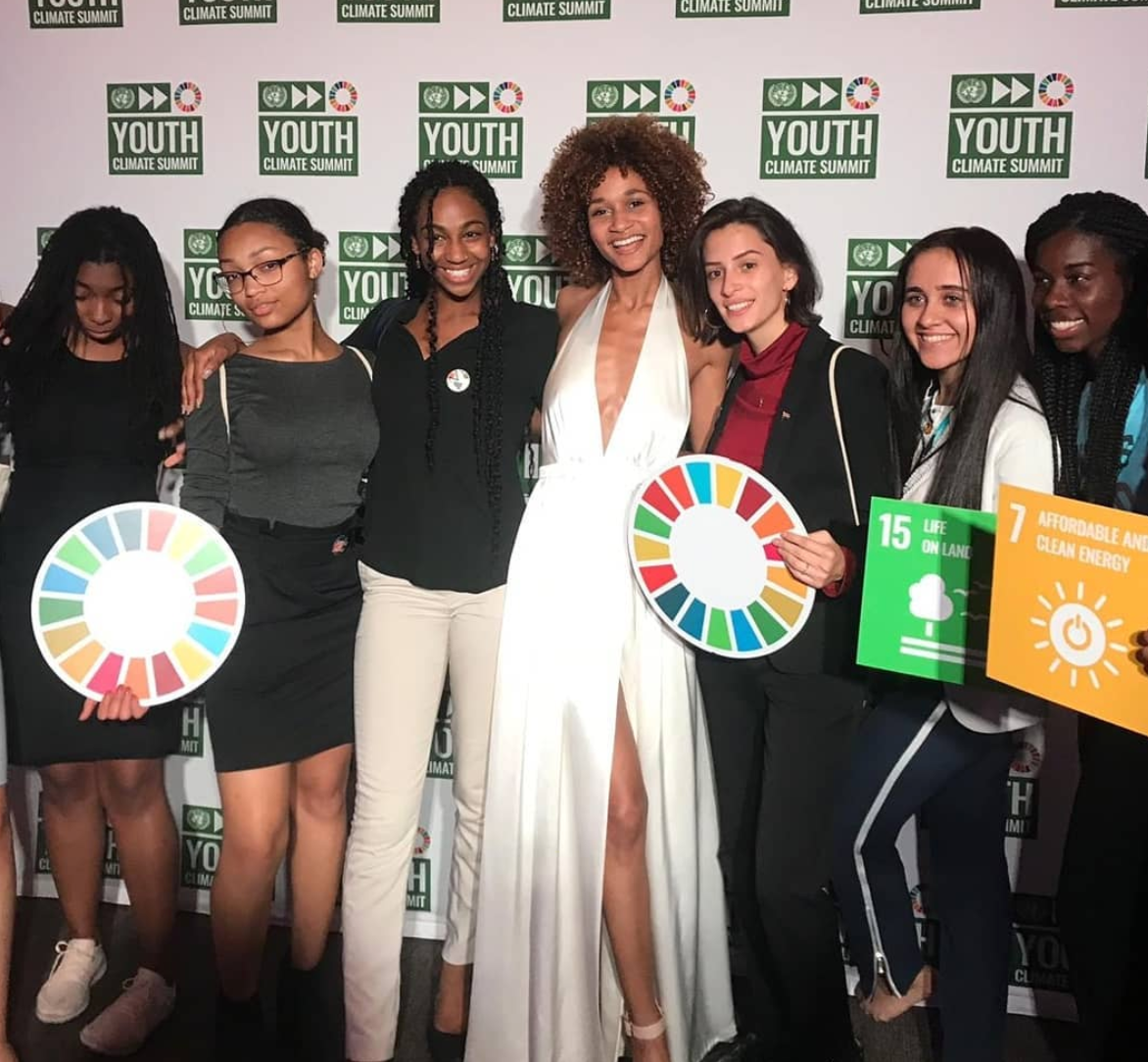
Racism Isn't Sustainable: A Timeline of the Climate Justice Movement
The below piece is by climate activist Zeena Abdulkarim (find her on Instagram at @zeeeeenaa ). She produced a series of posts for us on the Ware Instagram page about the ways in which social justice and the Black Lives Matter movement are crucial to sustainable development. Read on to learn more!

Saving the turtles, reusable straws, veganism & things of the sort, are all concepts that carry different levels of significance when discussing climate justice. Oftentimes they only gain momentum when the Karens and the Becky’s of the world decide it’s trendy or important. Some even believe the modern-day climate movement wasn’t a thing before Greta Thunberg came into the picture. You wouldn’t believe how far from correct that is. It’s important to be transparent about who established what movement, simply because these are the people who best understand why it’s so critical to fight for what they fight for. Often because they experience it first hand. Can we have these conversations without talking about race and demographics? The answer is no. Have you ever read or heard something along the lines of, “ A person of color did it first”? Well, when discussing environmental justice as we know it, we mean it. It comes to no surprise that the climate justice movement was sparked by black, native, and communities of color. Today, let’s take a look back to how the modern environmental space got to where it is, who got us here, where we go next & who’s gonna take us there.
Indigenous cultures are heavily comprised of practices that honor & coexist with the earth. That said, there’s much to learn from them. Subjecting these communities and the earth to harmful treatment is a notion they’ve long fought against in the US. These are the same people who are currently fighting the good fight to “save the planet”. In all transparency, amidst my research on who has greatly contributed to the establishment of this movement, I found very minimal resources that highlight the work of indigenous communities. This is unjust because they have entire cultures surrounding environmental consciousness. Think of the Dakota Access pipeline protesters alongside the numerous other instances of protecting the earth these communities have fought tirelessly for. This is at the fault of environmental researchers who discredit the mass presence of indigenous communities in this space. That must change because these communities have so much wisdom we can learn from them.
With the research I was able to accumulate, I found that the first mass demonstration of demanding environmental justice stemmed from a sanitation strike in the black community in Memphis Tennessee in 1968, which Martin Luther King was involved in. In December of 1970, the Environmental Protection Agency was founded. Within the next two decades, sit-ins were demonstrated by black communities in NC (Warren County) which led to environmental racism being legitimized & legally studied. By the late 80s and early 90s, communities began to establish their own environmental protection organizations, like the West Harlem Environmental Action & the Indigenous Environmental Network. During this period, the discussion of environmental racism began to take place between the EPA & black communities, which led to workgroups addressing environmental racism being created (by 1992, this group was implemented as an office @ the EPA). In Oct 1991, the first national people of color environmental leadership summit was held in Washington DC where BIPOC across the US joined and established the 17 Principles of Environmental Justice. In 1994 President Clinton signed Executive Order 12894, which as much as that sounds like a top-secret area 51 project, it's actually just a federal action to address environmental injustice through strategies of programs and policies, legally. In the late 90s & early 2000s, climate activism had really begun picking up as many climate scientists were encouraging immediate climate action due to the approaching climate crisis. Programs, research, and collaborations continued to thrive in many communities, and lots of people benefited from these works, but there was still much to take on regarding environmental injustice and climate change. By 2007 a toxic waste and race study was conducted which confirmed that people of color were more concentrated around hazardous facilities (which.. we been knew) than in 1987. Essentially, environmental living situations for BIPOC were getting worse & no legal action had been made to address the climate crisis. In 2010 the Obama administration held a forum where over 100 climate justice orgs came together & further discussed climate justice. Many people were getting fed up with global leaders' lack of climate action despite climate scientist’s warnings.
In 2014 over 400,000 citizens of New York organized, to march for climate justice, as well thousands of other cities across the US. This was in efforts to encourage global leaders to implement climate action at the upcoming 2014 United Nations climate summit. Soon enough youth organizers came into the picture & the scene shifted. Young people had enough of global leaders not taking the climate crisis seriously, thus putting the futures of young generations at great risk by not securing a livable planet. It seemed as if the responsibility was placed upon future generations to deal with the climate crisis and frankly, Gen Z was not having it; the reputation of Gen-Zers being entitled brats has never been more convenient for everyone. Youth environmentalist organizers at This is Zero Hour, a youth women of color-led climate justice organization led the first-ever youth climate march in Washington DC of 2018, demanding action from government officials. Since then, the climate space has developed through hundreds more youth-led climate orgs and campaigns being established with more of a focus on intersectionality than ever before.
It is evident that the youth have taken the wheel of leadership in this space, but where do we go next? First, educate yourself on climate justice and what a world with environmentally conscious practices will look like and how to achieve it. In any movement, it’s critical to listen to the voices of elders and prioritize the experiences of black, indigenous, and communities of color, as they are able to guide us into the most inclusive forms of justice. Listen to climate scientists, they are giving us the science behind the climate crisis that we all need to understand (yunno, the science global leaders are ignoring). Support & uplift youth organizers as they are working with government officials across states and seas to ensure a livable planet; this can be done through donating to youth orgs or through uplifting their works. Remember, this is a fight to literally make sure our earth does not perish. Whatever you are able to do through individual lifestyle changes or through encouraging legislative action (which is most critical), do that. We have a long fight ahead of us & since we’ve ignored climate science for too long, not enough time. Remember the power lies within the people, so through collective organizing, we’re able to achieve actions we seek to live out; a livable planet, a world we hope to save, justice for all.
Until next time,
-Zeena.

Leave a comment